Revised VW ID.3: Higher quality at higher prices
Volkswagen has now officially unveiled the revised ID.3, in which the quality of the interior in particular is to be significantly improved. The powertrains remain unchanged (for the time being). We have already had the opportunity to take a seat in the facelifted model.
++ This article has been updated. Kindly continue reading below. ++
The premiere of the revised ID.3 was preceded by an unusual procedure: At the beginning of December, VW changed the configurator of its compact electric car and added a note that the delivery deadline had already been extended into the fourth quarter of 2023. “According to our current plans, we will already be producing the ID.3 in its enhanced version at that time. As a result, at the time of your delivery, we will no longer be able to deliver the vehicle shown in the configurator or contract on the day of your order, but the ID.3 model that has already been further developed,” it was said at the time.
In other words, the ID.3 in its previous form was already sold out by the planned end of production. Since VW did not want customers to order something that would then not be delivered in this form, they would either have had to impose an order stop and take the configurator offline. Or they should have informed the customer that something was going to change – even if they could not yet say exactly what these changes would be. Wolfsburg has obviously decided on the second option.
At a preview meeting, electrive was able to get an impression of the result of these model upgrades. Even if the changes to the body are minimal – as suspected from the published sketches – the new design is striking. Or at least that something is different. For example, the headlights and large parts of the bodywork are still the same. The fresher impression only comes about thanks to a few details.
The front bumper, for example, has been redesigned. The “friendly” face with the “smile” of the narrow air intake has been reinterpreted and supplemented on the sides of the bumper by vertical air intakes for an “air curtain”, which is intended to improve the airflow around the front wheels – and at the same time looks a bit sportier. The lozenges previously positioned there have disappeared completely, and the lozenge foiling is also no longer available on the C-pillar. In addition, the front bonnet is now completely in body colour, the black element at the transition to the windscreen has disappeared. Since the previously existing black strip above the licence plate holder has also disappeared, the proportion of painted elements at the front has increased significantly.
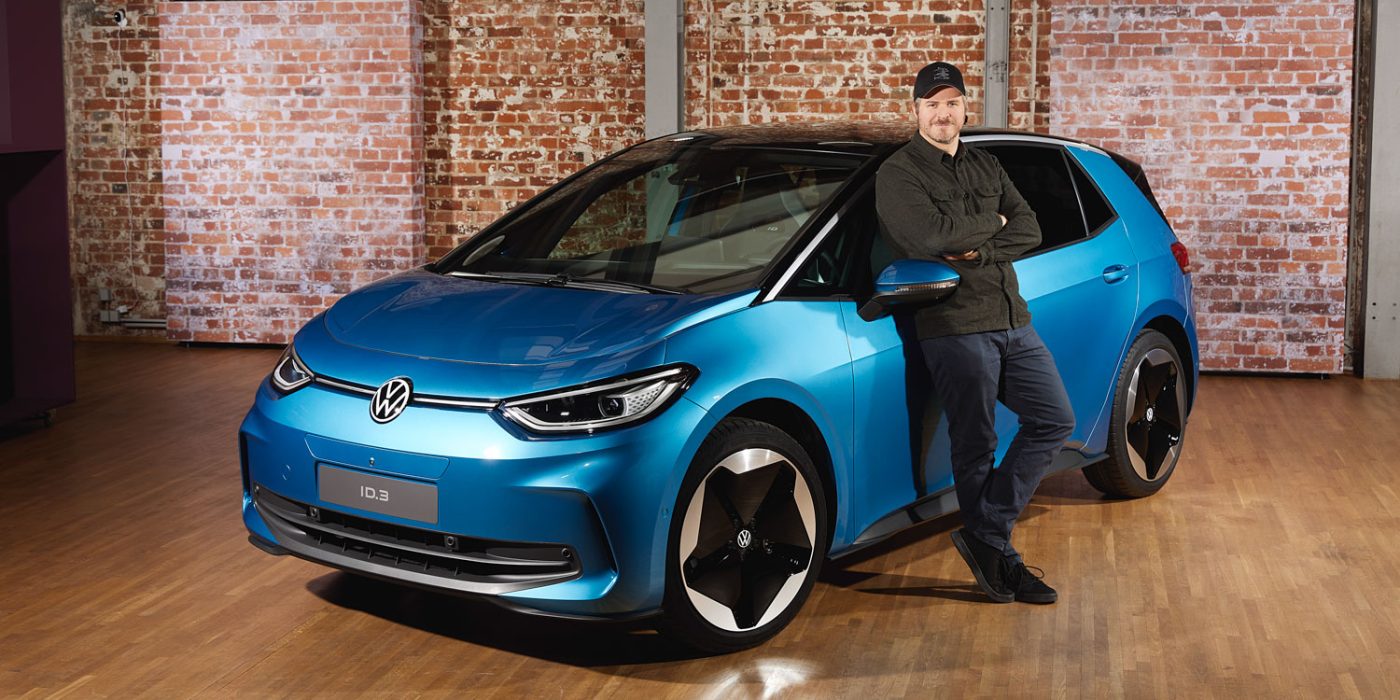
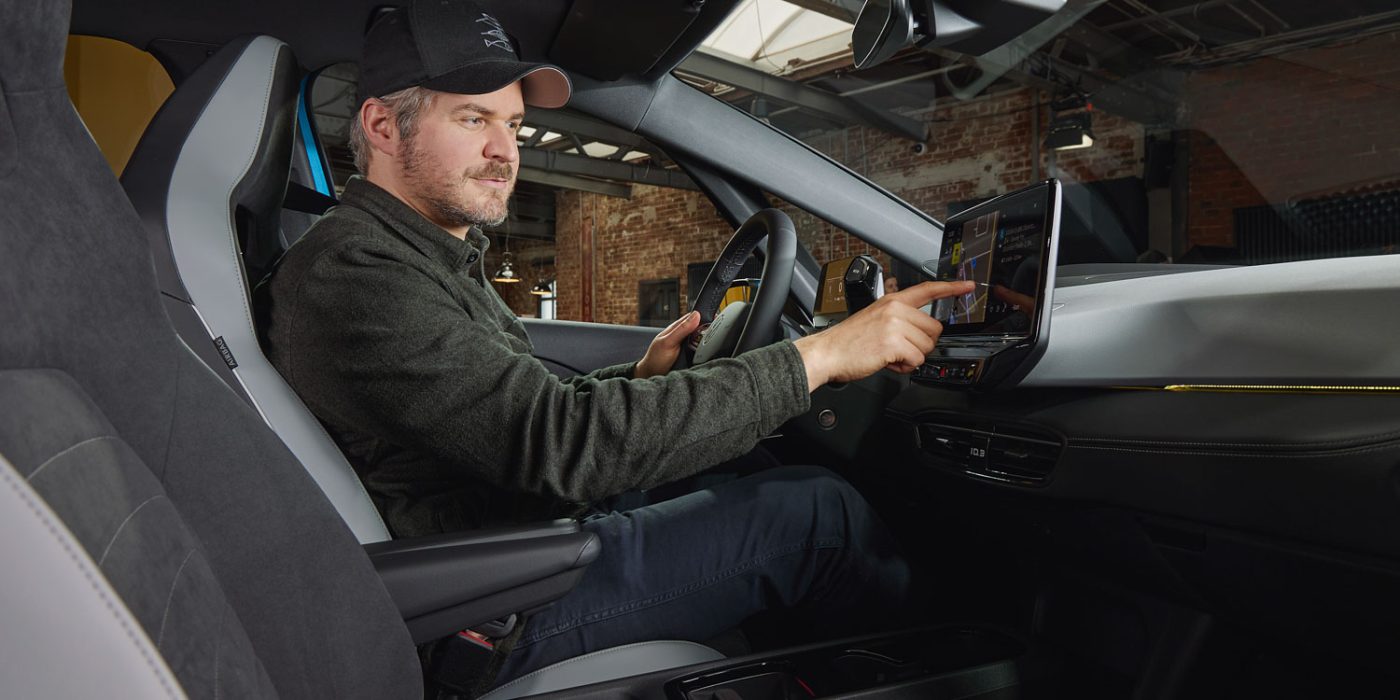
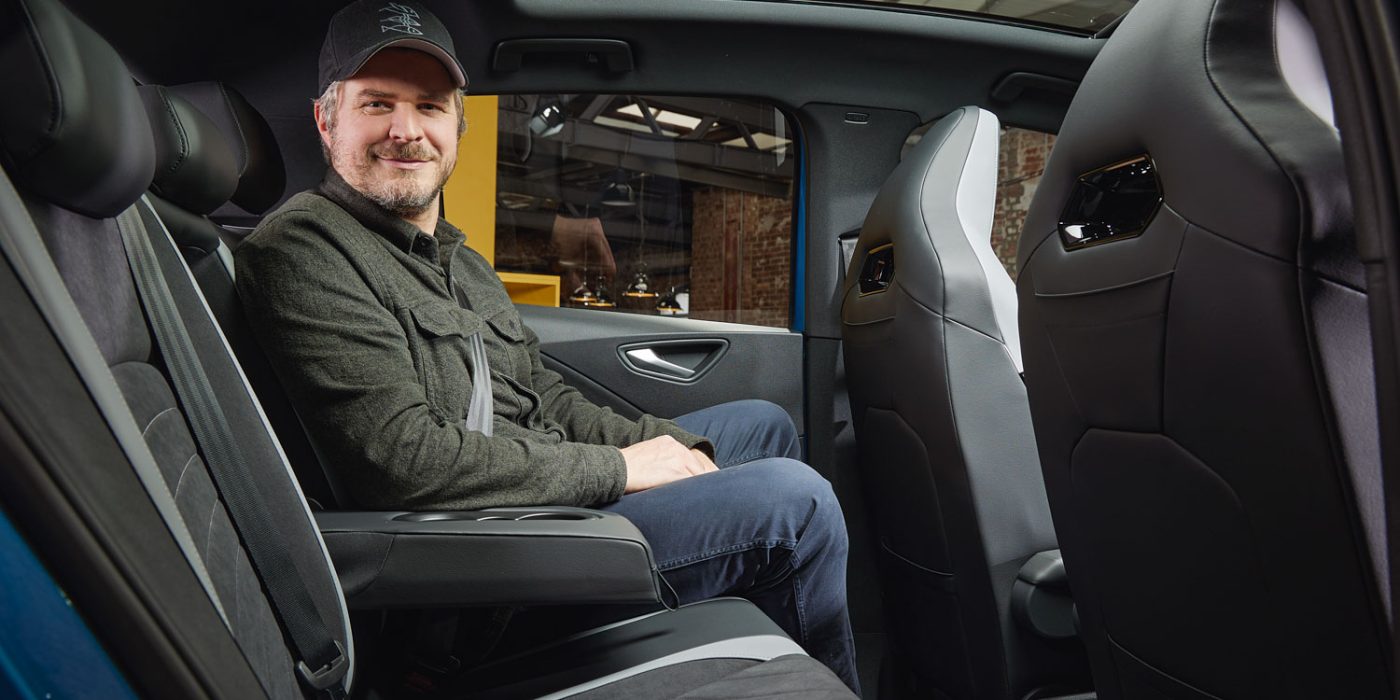
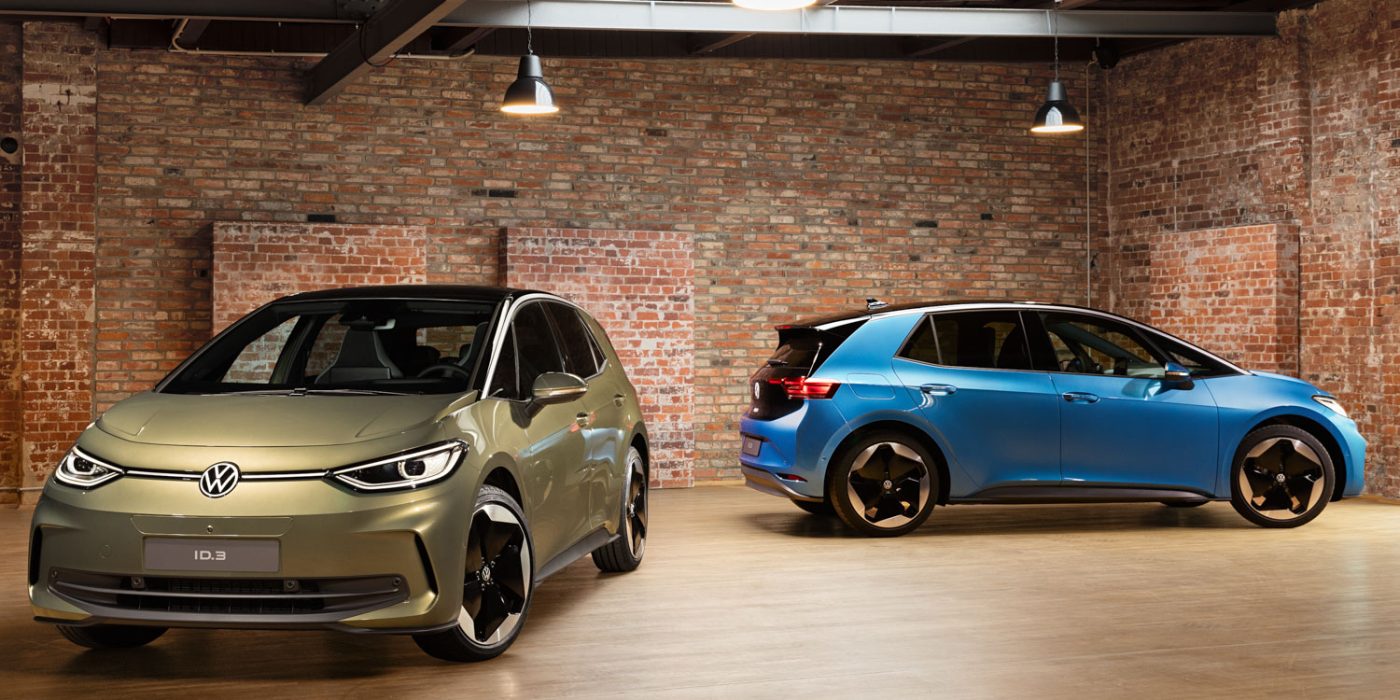
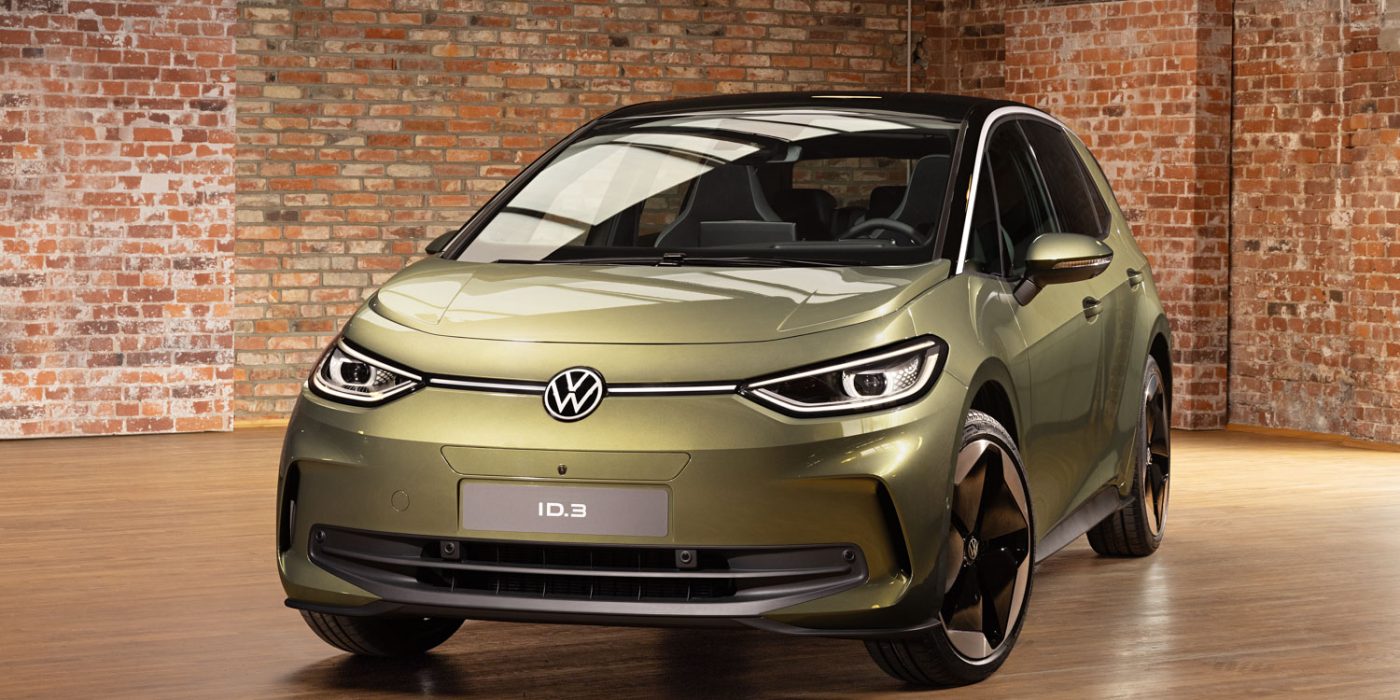
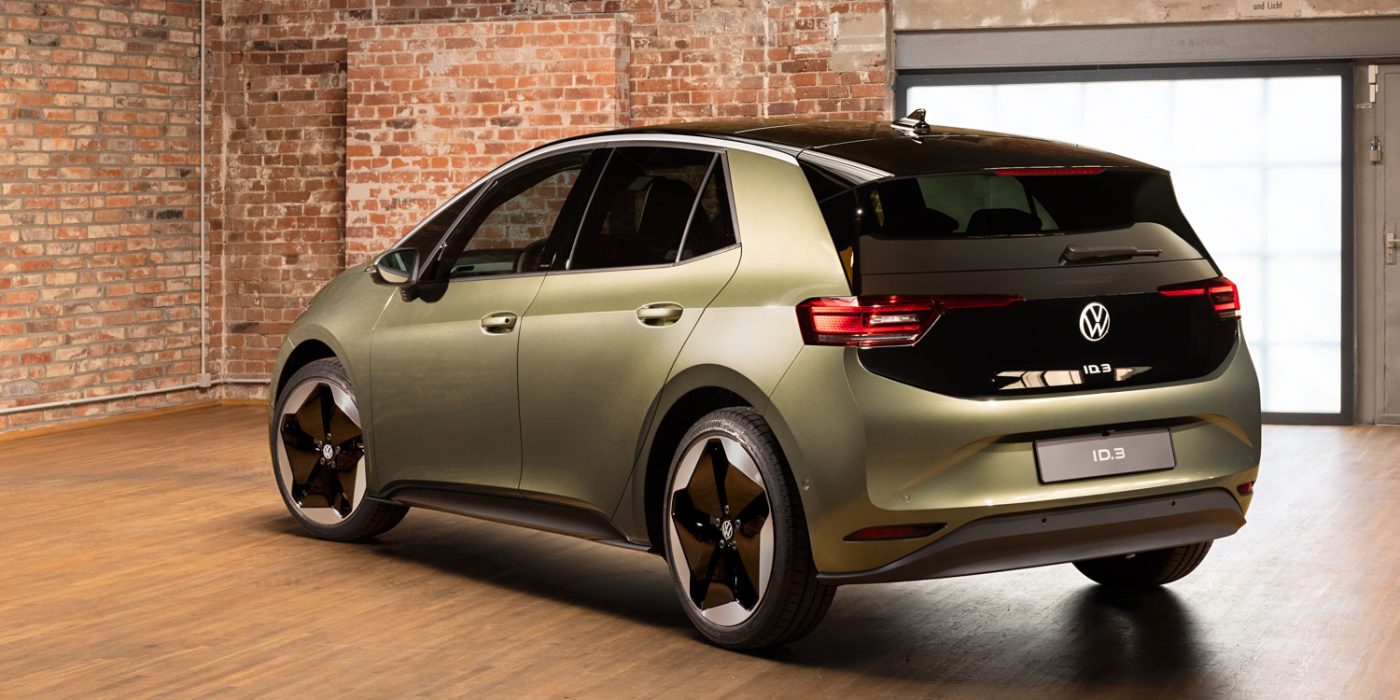
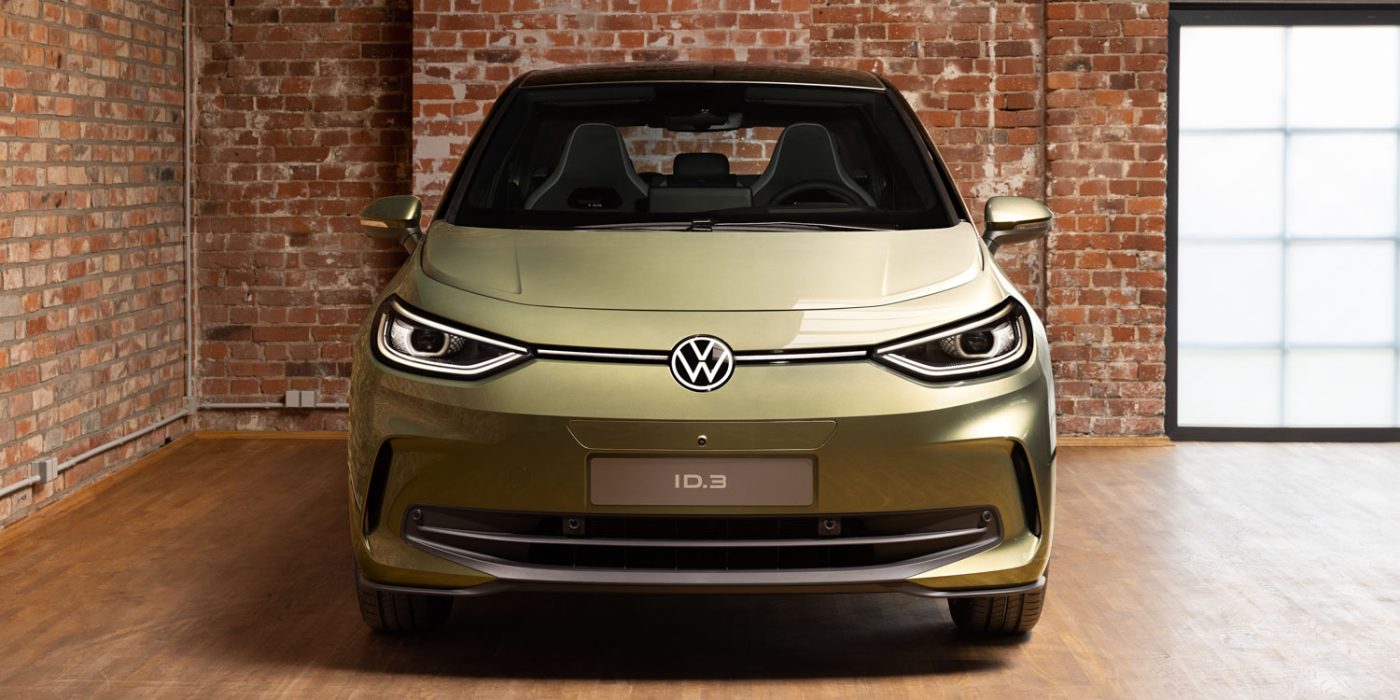
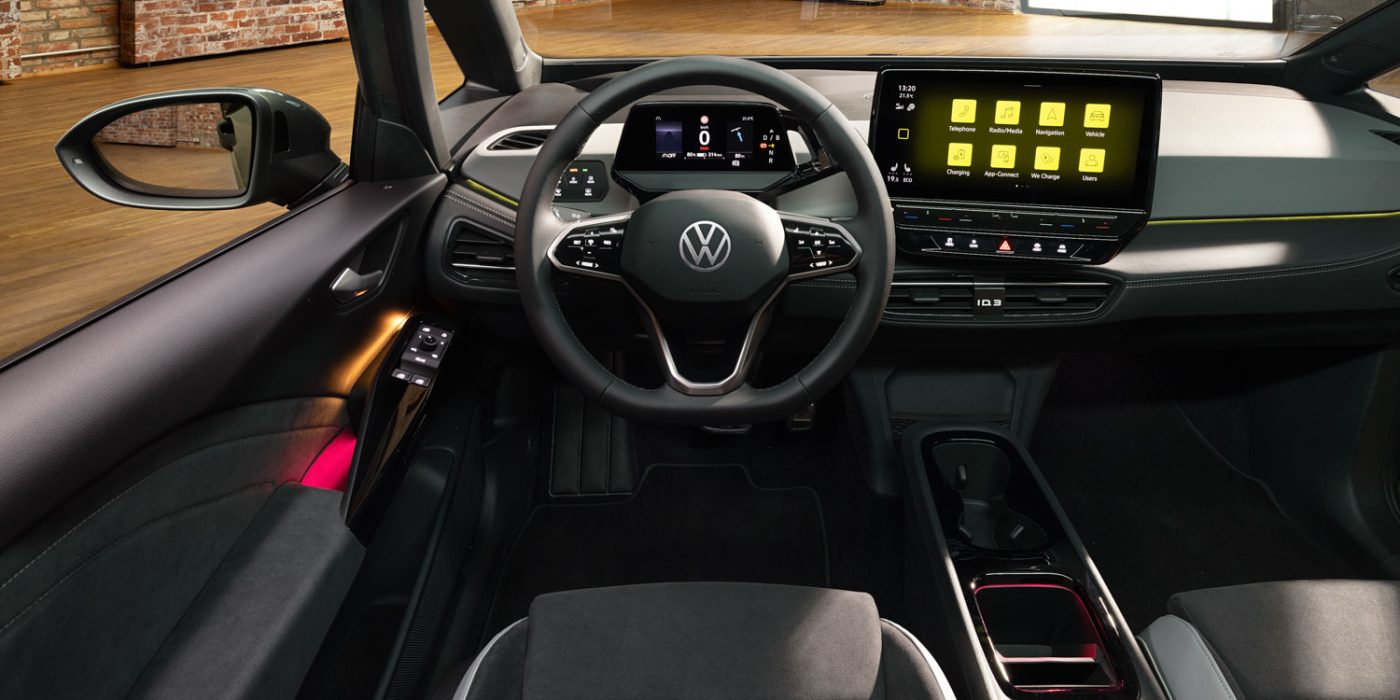
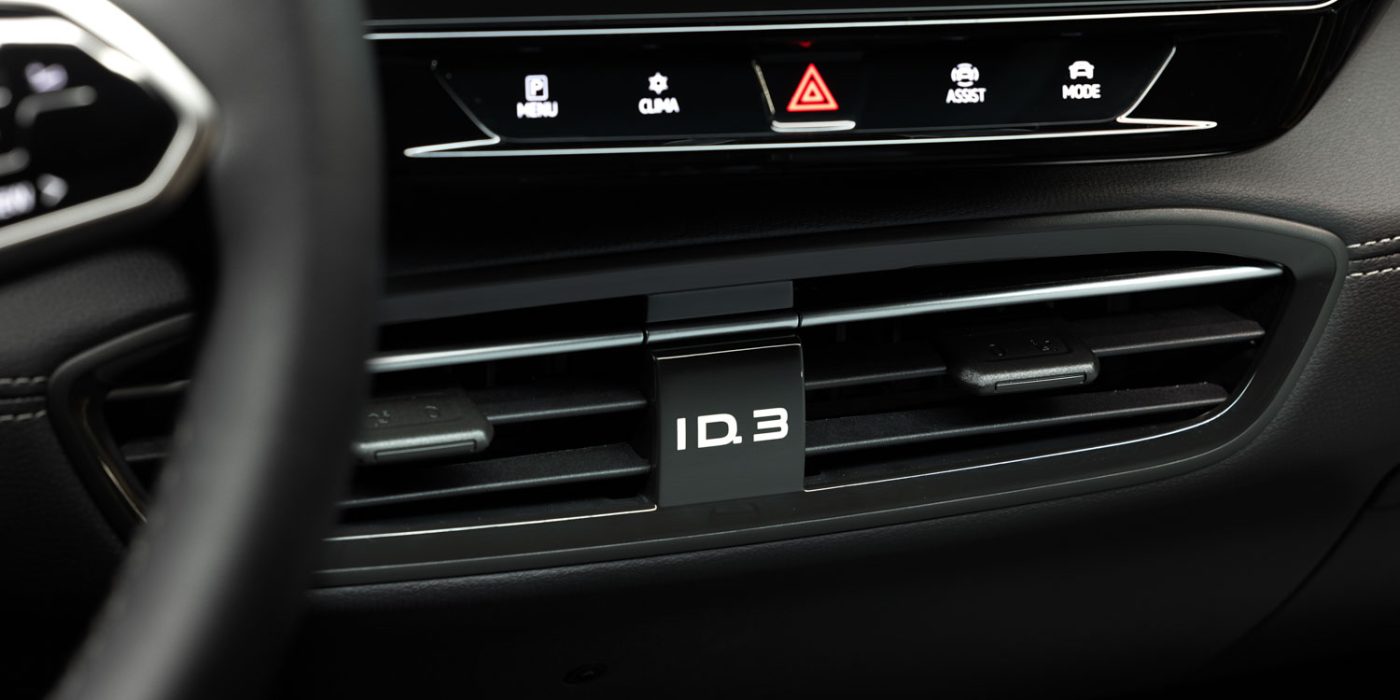
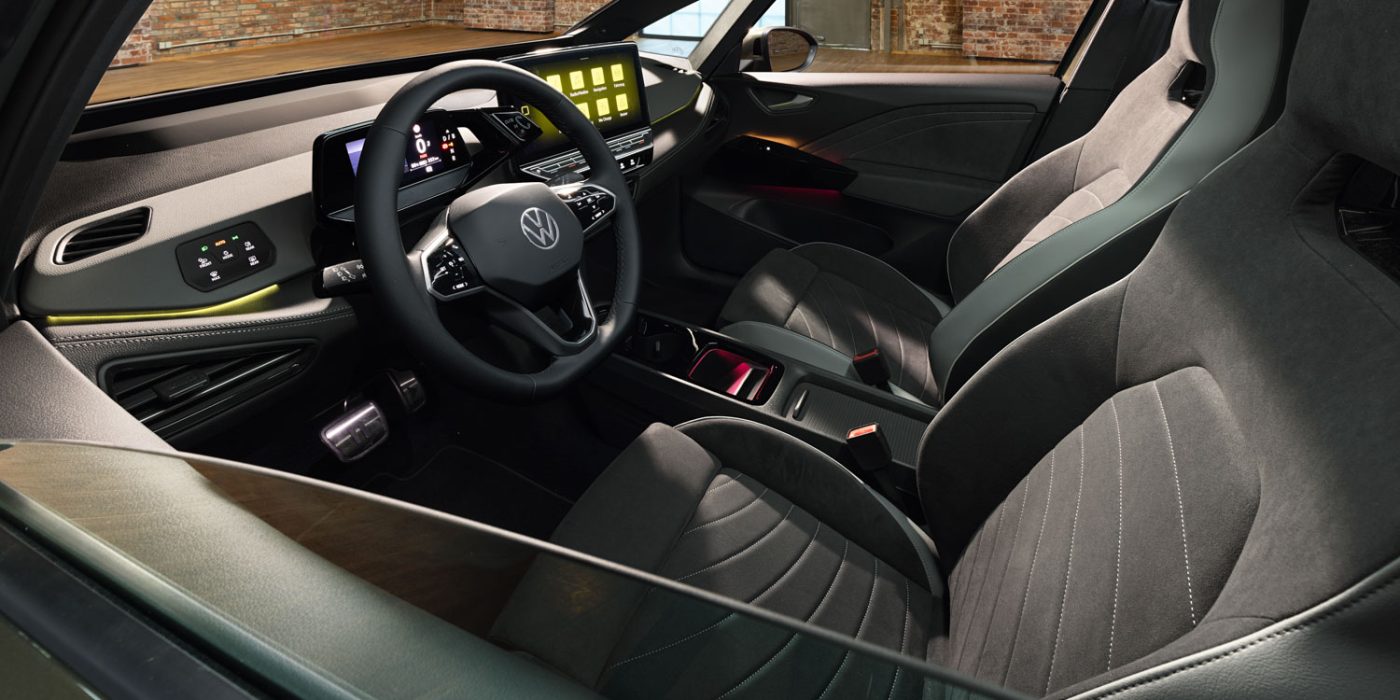
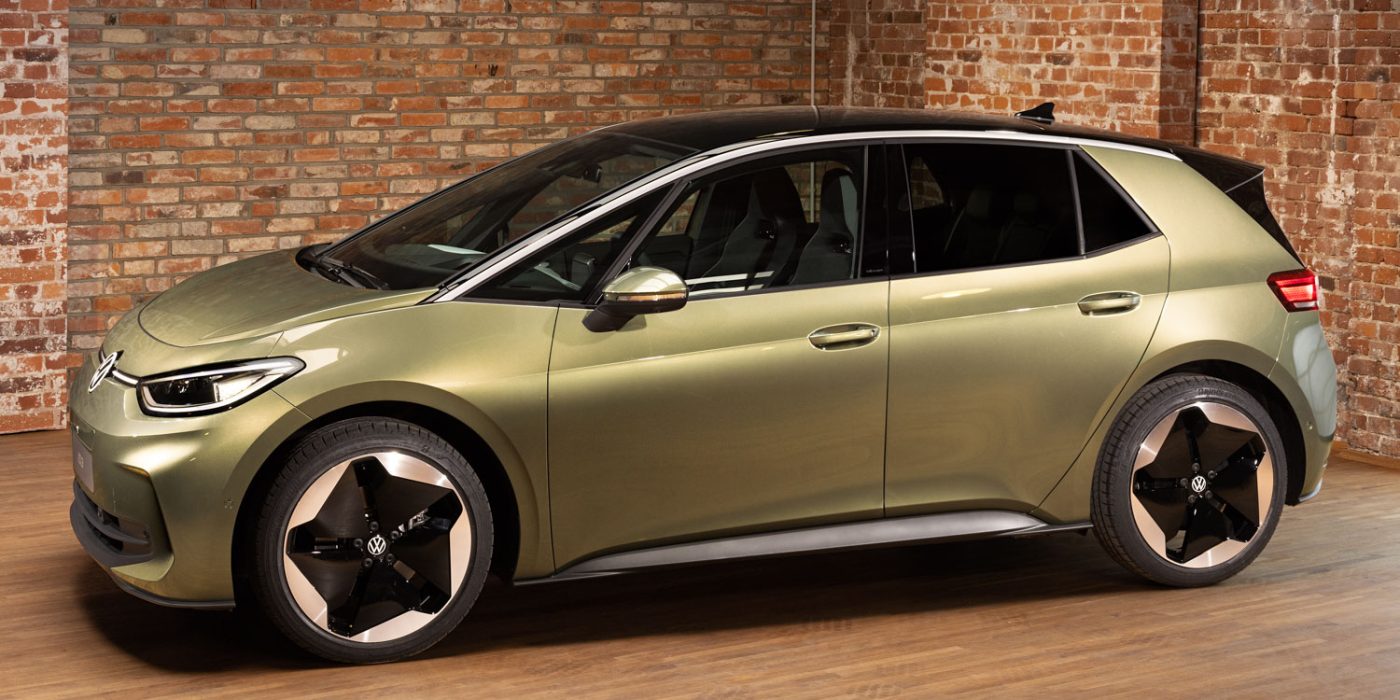
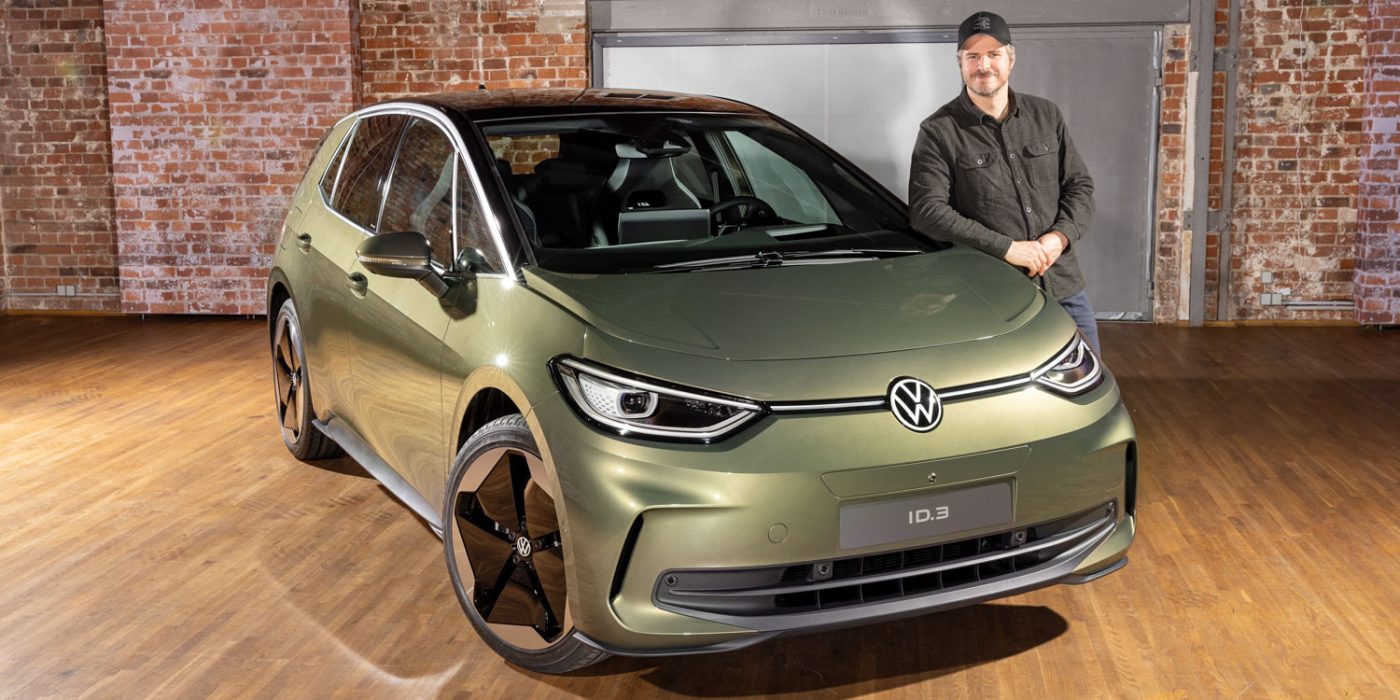
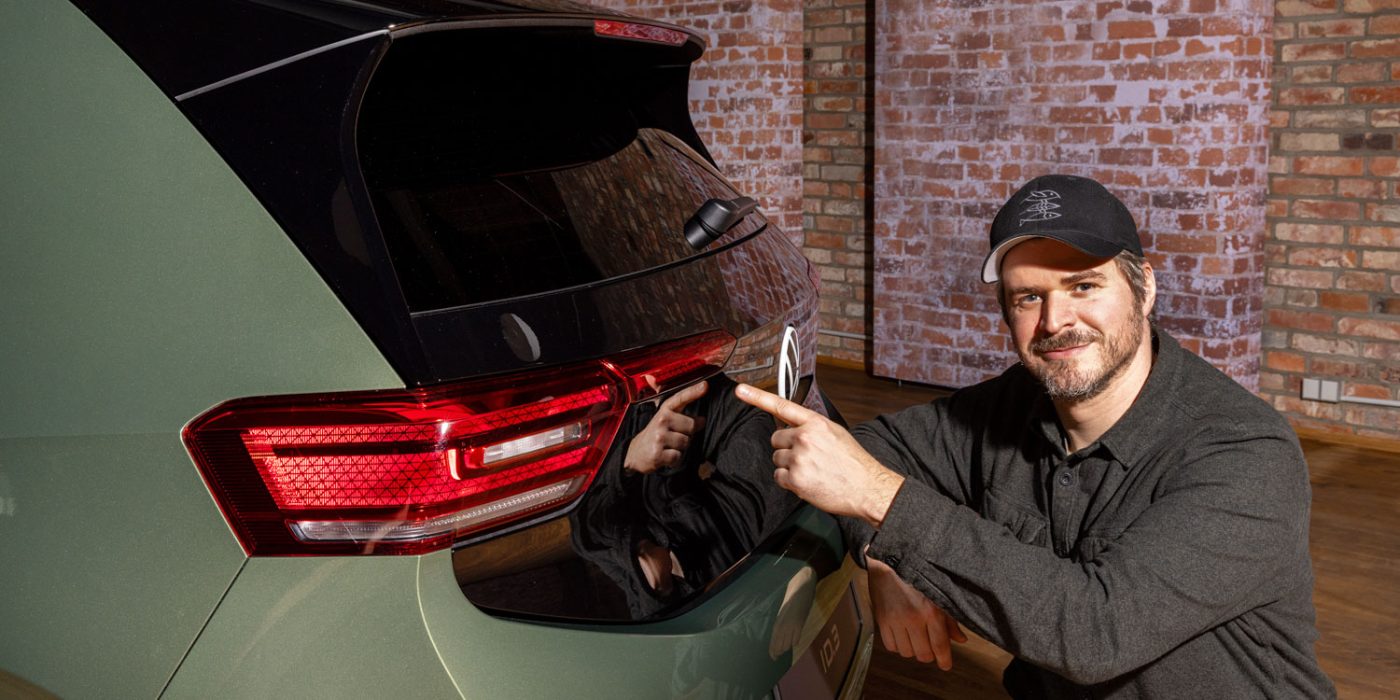
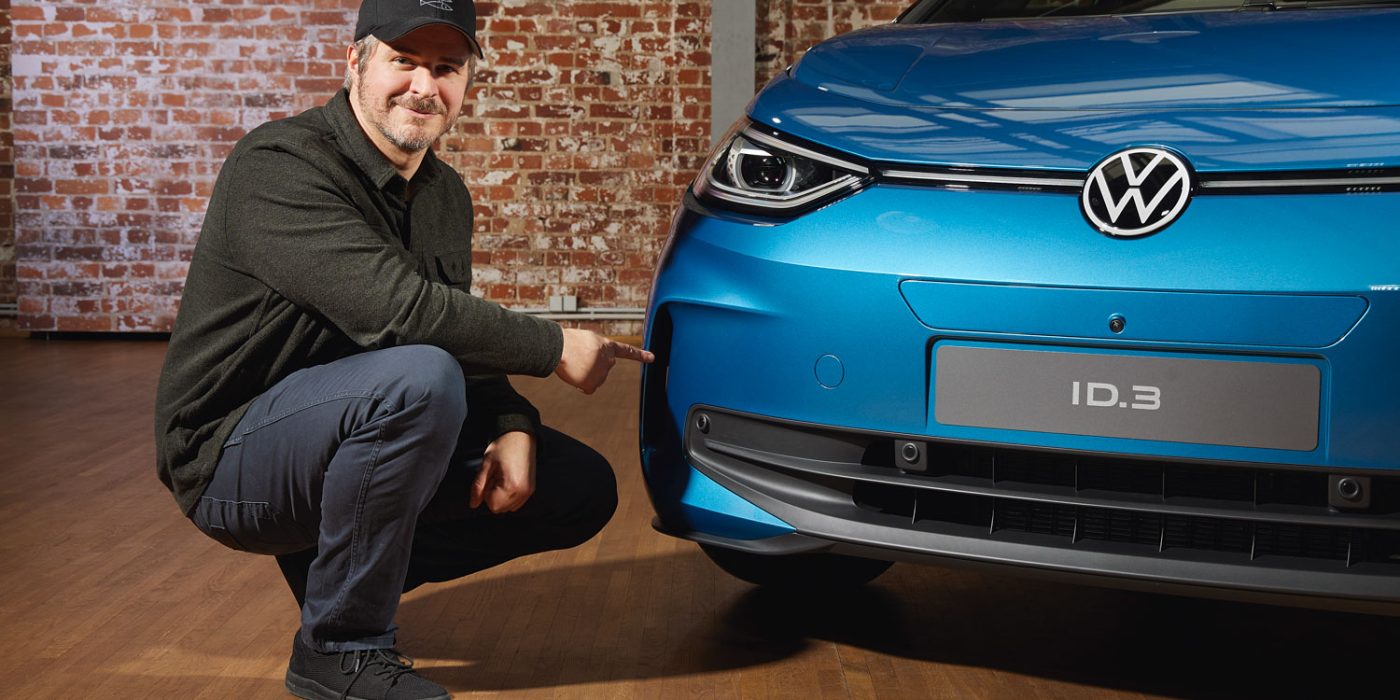
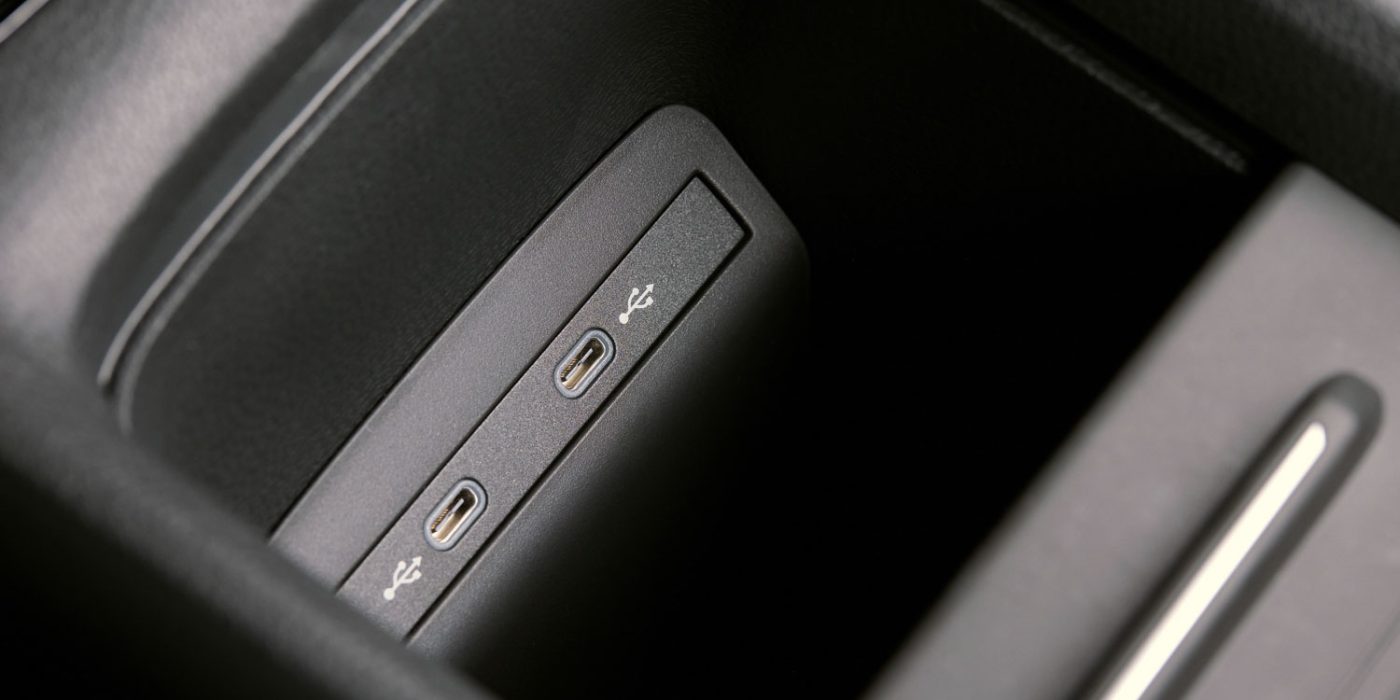
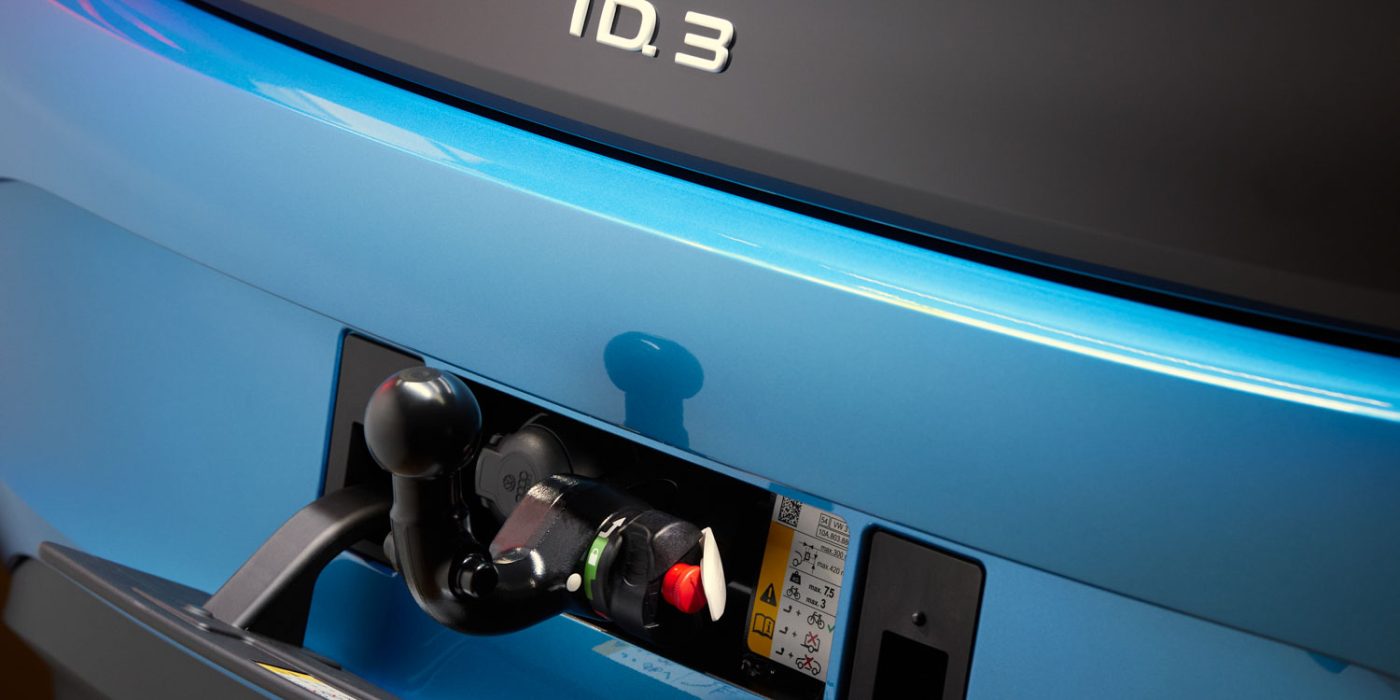
At the rear, the changes are less extensive. Only the outer elements of the taillights, which are integrated into the bodywork, were illuminated. Although the rear lights extend into the boot lid, they have remained dark, as VW dispensed with the additional wiring, only installing reflectors there. Since VW has said goodbye to the €30,000 ID.3 due to raw material prices and the semiconductor crisis, the budget is no longer quite so tight.
However, the change in strategy in terms of austerity is most noticeable in the interior. Here, the criticism of the large hard plastic panels was particularly loud – and rightly so, as VW itself now admits and has already announced a remedy. The feedback from customers was clear. In order to achieve the base price of 30,000 euros, savings had to be made in many areas.
And something has really changed, because even the more basic equipment has been significantly upgraded: The relatively contourless basic seat is no longer offered, the simplest version of the centre console has been dropped and large parts of the hard plastic trim as well – in the lower area a harder plastic is still installed, among other things for robustness. The visible elements on the doors and in the dashboard, however, are now made of a foamed material. This not only looks more upmarket and finally appropriate for the price class, but also feels like it. At least at the front, because the hard plastics are still used in the rear doors.
In addition to upgrading the interior, sustainability is also to be increased: The ID.3 is now completely animal-free, even the cover of the steering wheel is no longer made of leather but a replica. At the same time, the proportion of recycled materials has also been increased, for example in the seat covers, carpets or headlining. The microfibre material “Artvelours Eco”, which consists of 71 percent recycled material, is used for the door trims and seat covers. The other ID. models are also to use more recycled materials from 2023 – in the ID. Buzz, VW had introduced some recycled materials, which will also be used in the ID.4, ID.5 and the upcoming ID.7 in the future.
The steering wheel cover in the ID.3 is new, but the steering wheel itself is not. The return of the control buttons on the steering wheels, announced by VW brand boss Thomas Schäfer, has not yet been implemented in the ID.3 update. As was heard on the sidelines of the pre-event, this is not due to existing delivery contracts or missing parts. In the development of the entire MEB, it was simply not planned to install steering wheels with buttons – accordingly, the electronic architecture is not designed for this. This means that deeper interventions are necessary than simply fitting a different steering wheel at the factory. It will come, but later.
On the other hand, the twelve-inch display familiar from the ID.4 has also been made standard in the ID.3. In direct comparison, the previously installed ten-inch display looks small and outdated. The basic operating logic remains the same, but VW says that various customer wishes have been implemented in the menu structure. Among other things, the charging menu is now located on the first level of the large touch display and is structured in a more informative and tidy manner.
No changes were made to the Pro and Pro S battery versions and the battery sizes of 58 and 77 kWh net energy content remain the same. The ID.3 Pro with 58 kWh can travel up to 426 kilometres in the WLTP cycle, the ID.3 Pro S with 77 kWh is stated to travel up to 546 kilometres. There is also no change in the drive unit (yet), it is the familiar permanent excited synchronous machine (PSM) on the rear axle with 150 kW output. Only with the ID.3 GTX will there be an innovation in the drives.
The announcement says that a smaller battery will follow. There are no details about this. So it is unclear whether it will be a comeback of the 45 kWh battery that was offered for a short time (which is very likely) or a new battery option. The decisive factor here, however, is likely to be less the battery cells and more the semiconductors. As long as these are in short supply and demand is high, the available semiconductors will tend to be installed in the more expensive models.
In addition, VW has decided to introduce some “functions on demand” in the ID.3. In other words, the necessary hardware is installed at the factory, but not activated. This can either happen at the time of purchase or be added later – either as a subscription or permanently for a one-off payment. This is why, for example, a camera is always installed in the redesigned front bumper of the revised ID.3, even if no assistance systems are booked that would use the camera.
Functions that can be booked afterwards include, for example, dual-zone automatic climate control or the navigation system. VW wants to earn money with this, of course, but also increase flexibility for the customer. If the car is primarily used as a commuter vehicle by one person, for example, neither the dual-zone air conditioning nor the navigation system are really necessary – alternatively, navigation via smartphone apps is possible thanks to ‘App Connect’. If you want these extras for your holiday trip, you can book them for a month, for example. Or if the car is sold and will be used as a family car instead of a commuter vehicle, the buyer can still book the extras.
However, the exact prices for the ‘Functions on Demand’ have not yet been fixed. But they will certainly have a strong influence on whether the offer is actually used.
On the other hand, it is already clear what the entire car will cost in future – because the prices will be known when the configurator is switched over in December. The ID.3 Pro with the 58 kWh battery starts at €43,995, the pre-facelift model was available with this battery from €38,000. Even when the base model with 45 kWh returns, it will no longer be available for €30,000.
Update 27 April 2023
The revised VW ID.3 can now be ordered in the UK with prices starting from £37,115. On launch, two battery sizes and trims are available with the 58 kWh Pro and the 77 kWh Pro S. The ID.3 Pro S can be charged from five to 80 per cent within 30 minutes with a charging capacity of up to 170 kW, while the ID.3 Pro needs 35 minutes with a charging capacity of up to 120 kW. The large battery gives the ID.3 Pro S a predicted range of up to 559 km/347 miles.
Reporting by Sebastian Schaal, Germany.
Info via email, volkswagen.co.uk, volkswagen.co.uk (both update, configurator)




0 Comments